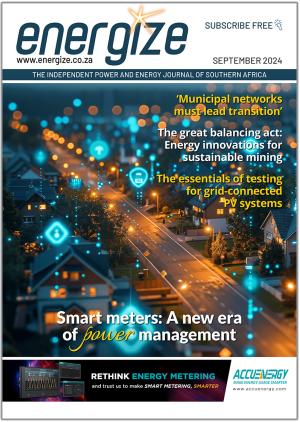Managing South Africa’s transmission network more strategically could unlock significant amounts of renewable energy capacity, to make more power available to the country, its people and its economy.
This was one of the messages emerging from a presentation at the Green Energy Africa Summit on Tuesday by Segomoco Scheepers, Managing Director of the transmission division for Eskom.
By using a system called curtailment, the transmission network can be capacitated to host more renewables generators, and up to 4 GW of additional capacity can be connected, Scheepers explained. Current Eskom peak daily generation is around 28GW.
Curtailment involves reducing output from renewables plants to release immediate grid capacity.
“Curtailment is a technique applied by utilities in parts of the world that have a far larger penetration of renewables than we have,” said Scheepers. “We are engaging with our customer base who might be affected by the curtailment plan, and so far the feedback has been very positive.”
The curtailment approach could unlock scarce grid capacity in high-potential renewables regions like the Eastern, Western and Northern Cape, and would allow for additional generation capacity to be built at points on the grid that had previously been fully committed.
“In general terms, for the Eastern, Western and Northern Cape. With less than 10% curtailment, we can add an additional 4 GW of generation capacity. But clearly, it's something that needs to be properly discussed with the regulator and other stakeholders,” said Scheepers. “We will then be able to communicate who can be connected to specific nodes on the grid. Getting approval for this strategy is already part of our workflow process.”
Scheepers said the proposed framework requires the approval of the National Energy Regulator of South Africa (Nersa) and an outline by the Independent Power Producer Office.
“Without curtailment, it's almost like you are wasting energy,” explained Scheepers. “Curtailment ensures we don't destabilise the system by getting too much generation when the demand is actually low.”
Scheepers also said Eskom planned to be more systematic in how it dealt with its connection obligations.
“From a generation perspective, as we increase the level of renewables into the system, it's important that we assess the cumulative impact of all the allocations before they are approved. Because if you over-commit in your approval of renewables, you potentially could be putting the system at risk, which is something we totally must avoid.’
“We are living in exciting times,” said Scheepers. “We continue working to decarbonise and to improve energy security. The transmission grid is critical to enabling that.”















